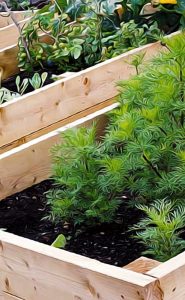 Some people have a garden for aesthetic value, others to grow food. For me, the main motivation is the problem-solving aspect. What do I mean by that? It’s basically a seasonal thing. Creating a garden that works across the whole cycle of a year takes a bit of fancy footwork in designing and implementing it, and that’s what keeps me interested.
Some people have a garden for aesthetic value, others to grow food. For me, the main motivation is the problem-solving aspect. What do I mean by that? It’s basically a seasonal thing. Creating a garden that works across the whole cycle of a year takes a bit of fancy footwork in designing and implementing it, and that’s what keeps me interested.
It’s never the same for more than a month at a time (if that), and there’s always a new question to ponder – like, how do I highlight the irises when they’re at their flowering best, and detract attention from them when they’re dying down? What can I plant among the roses to keep them from picking up those weird little bugs that seem to migrate over from the neighbour’s yard in November? What can I move into that sloping bed next to the baby bay tree that mysteriously causes the annual greens to bolt sometimes (but not always)?
The questions are endless, and there’s always an answer. Not always a good answer, mind you – more of then not, the solution I come up with to any given problem simply multiplies the questions. That, it seems, is the way of the garden. No matter how good you become at managing it, it will raise its game to test you further until you’re knee-deep in a tangled web of crop rotation, companion planting and bamboo stakes.
I suppose it’s a complicated as you want to make it. Complicated probably isn’t the right word, though. No matter how complex your garden game becomes, it still somehow makes sense, every time. It’s like there’s a magical answer to every question you might have, and even if it’s not the one you come up with, the fact remains that it’s there – it’s just temporarily concealed by the time of year, a neighbouring plant, or simply your feeble human mind.